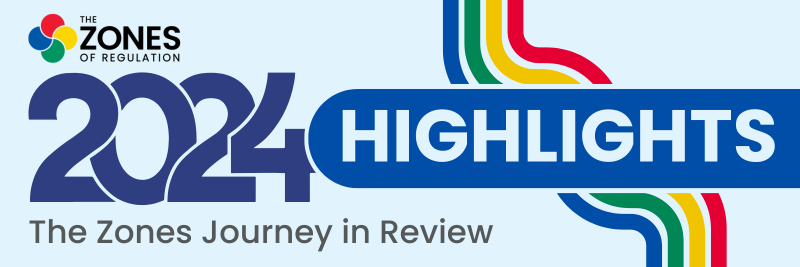This blog is an excerpt from the Adult Learning Modules in The Zones of Regulation Digital Curriculum and the Getting Into The Zones of Regulation curriculum companion guide.
Interoception involves the ability to notice and understand your body signals, such as the heart rate, breathing, hunger, thirst, and other sensations. It helps individuals recognize and interpret their own physiological states, which, in turn, can influence emotional experiences and responses. For example, being attuned to sensations like an increased heart rate or shallow breathing can contribute to the awareness of anxiety or stress. Kelly Mahler, an expert in the field, defines interoception “as the sense that allows us to answer the question, ‘How do I Feel?’ in any given moment.” (Interoception, 2015).
Neuroscientists have found that interoception is an integral component of the emotional experience, as our body signals provide important clues about our feelings and emotions. Therefore, it’s essential to teach learners to notice their own personal body signals so that they have reliable clues to inform how they are feeling or what emotion they are experiencing in any given moment and what they need to comfort their body. Think about having an exhausting day at work, and then consider how much capacity you would have to regulate the emotional stressors at home. Noticing our body signals can alert us to take actions that help us to regulate (such as taking a warm bath or drinking a cup of tea to unwind) and re-establish our balance and coping capacity. In other words, knowing when we need to regulate our bodies and doing so helps us manage our emotions and behaviors.
Interoception and The Zones of Regulation
The Zones of Regulation addresses interoception by exploring the body signals associated with each of The Zones, understanding what the learner’s body is communicating about their feelings and internal states, while building the language/communication associated to label and identify feelings. It’s important to note and emphasize that each person will experience body signals within the four Zones in their own unique way, which is why we suggest “possible body signals” associated with each Zone:

As learners (and those who support them) become more attuned to their interoceptive cues, or body signals, we can begin exploring a variety of sensory-based strategies as tools for regulation. Ultimately, the goal is for learners to build an awareness and understanding of their body signals and the ability to regulate them to feel well, work well, and achieve their goals.
For learners who need deeper support in building awareness and understanding of interoceptive body signals, The Interoception Curriculum (Mahler, 2019) is an excellent resource and can be used in conjunction with The Zones of Regulation.
Find out more about how we can teach learners to recognize body signals in The Zones of Regulation Digital Curriculum!




